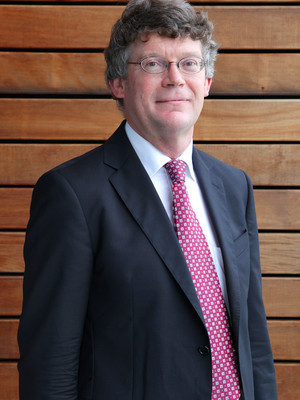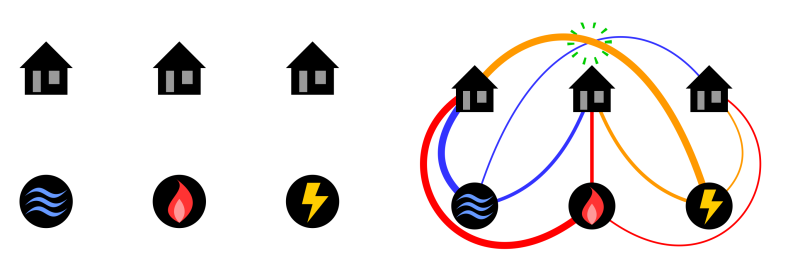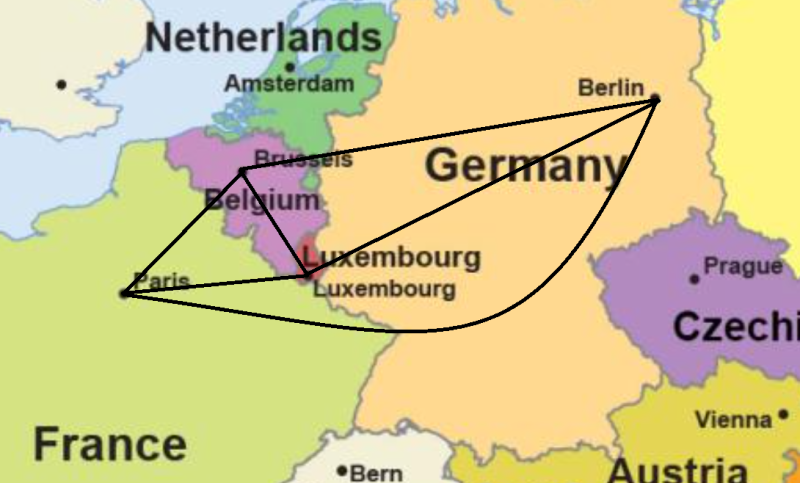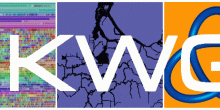On Friday 24th of September Professor Ton Koonen received a royal distinction “Ridder in the Orde van de Nederlandse Leeuw” during the symposium “Optical Networks – communication fabric of our society”, preceding his valedictory lecture “Light work(s)”.
Optical technologies are permeating all layers of communication networks, from optical fibre links crossing the oceans to fibre connections to every home, and are now at the verge of entering our homes too. Without these, the internet as we know it would not have existed, neither all the lifelines which are keeping our society together in times of society lockdowns.
This article is based on Prof. Ton Koonen’s valedictory lecture, it contains some parts of the lecture and its goal is to give a short overview of the evolution of optical communication technologies.
My ‘Leitmotiv’
“At the end of my formal appointment of more than 20 years as a full-time professor at TU Eindhoven, I would like to take you on a sight-seeing journey through what happened over all these years and how happy I have been to contribute my piece parts.

Before TU/e, I was in industry for another 20 years, the last nine years of which I was already partly involved in academia as a part-time professor at the University of Twente. All these years have been dynamic and it has been a great pleasure to be involved in the incredibly fast-evolving world of optical communication from its early years onward. When you enjoy your work, it does not feel heavy, it feels ‘light’… Hence the title of my valedictory lecture, ‘Light work(s)’, where ‘light’ has a dual meaning: ‘light’ as an adjective to indicate that the work in this domain has been a real pleasure and ‘light’ as a noun to describe how light really is a very important vehicle which has enormous power to carry information and thus keep our society together… Communication by means of light has been my ‘Leitmotiv’ all these years. It has been my drive for even more than 42 years.
In my valedictory lecture, I would like to introduce you to the wonderful world of optical communication. I plan to highlight, in particular, how optical communication evolved from a technology which connects big entities, like cities and industrial parks, to a technology which is reaching out to individual users, to their homes and offices, and even inside these buildings in order to extend the information highway all the way up to your devices. Fibre-to-the-Home has been installed in many cities in the Netherlands and ever more homes are being connected. As a next step, fibre will also enter the home, preferably in combination with technologies for connecting your devices wirelessly.”
On the global scale

Figure 1: Optical fibre networks – the fabric of our information society.
Over the last five decades, a very fast evolution of optical fibre networks has taken place. Whereas fibre links originally started as a powerful alternative to copper-based long-distance links between cities, they have expanded their territory a lot: at one end spanning across the whole globe and at the other end penetrating end user’s homes; see Figure 1. There are many fibre-optic cables crossing the oceans, such as those bridging the Atlantic Ocean from Western Europe to the US east coast over some 6000 km and those across the Pacific Ocean from the US west coast to Japan via Hawaii over some 9000 km [1].
The optical fibre was invented in 1966 by Charles Kao together with George Hockham at STL laboratories in the UK. I once met Charles Kao at a conference banquet in Hong Kong; it was truly unique to meet the founder of fibre optics in person. Kao received a Nobel Prize only in 2009, unfortunately a bit too late as he was not in a good mental health anymore. At Corning, USA, Donald Keck, Peter Schultz, and Robert Maurer produced the first optical fibre in 1970, but it still had large losses of about 20 decibels(dB)/km. Since then, enormous progress has been made in the purification of fibre glasses and in the control of production processes. Nowadays, fibre losses are as low as 0.17 dB/km, allowing a reach of more than 100 km. With its tiny single-mode core diameter of only about 9 mm, the transmission capacity of a single fibre has grown immensely to beyond 1 Tbit/s (i.e. 1000 Gbit/s) per wavelength, with room for over 100 wavelengths in the 1.5 mm wavelength bands where fibre losses are lowest.
Single-mode optical fibre has much lower losses than coaxial copper cables and also much higher bandwidth, so no wonder that they have taken over in long-haul transmission links. But maybe the most impactful difference which optical fibre brings with respect to copper cables, is that fibre offers an extra dimension for the transmission of signals, namely the wavelength dimension. In a fibre, photons carry the information. These light particles have a wide range of colours and each colour can be a separate transport channel within the same fibre. The fibre thus actually becomes a multi-lane highway in which each lane offers tremendous capacity and is independent of the other lanes. In copper cables, electrons carry the information and do not come in different colours.
Connecting the cities
Communication networks are obviously not only about transporting signals from A to B but also need to bring signals to many different places according to the required destination. So, the signals need to be routed in the nodes of the network. And again, the extra dimension of wavelength makes optical routers much more powerful than electrical ones.
In particular, we have done a lot of investigations into all-optical routers. By using tuneable wavelength conversion techniques, the incoming signals can be internally converted to other wavelengths and passive wavelength-routing devices then bring the signals to the desired output ports. The signals thus stay within the optical domain and are not first converted to electrical signals, switched and then converted back into optical ones; this would happen in electrical routing nodes. It may be compared to driving with your car to a roundabout and choosing the right exit: of course, you prefer to stay in your car and do not want to get out, walk to that exit and get into another car.
The traffic in telecommunication networks has predominantly become internet traffic, so traffic streams are therefore constituted by packets of data. These packets need to each be routed to their specific destination. Within the network nodes, very fast switching is needed to bring subsequent packets to the right addresses. The packet contains a label which indicates what its next address should be. The packet switching is controlled by the routing table, which reads the packet’s label and determines which new label should be attached to the packet in order to get it to the right next node. This so-called label swapping should be done without changing the data contents of the packet.
In our group, we have investigated a range of optical technologies for this label-controlled packet routing while keeping the data in the optical domain in order to avoid limiting the node’s throughput capacity. In the European Commission funded project STOLAS (Switching Technologies for Optically-Labeled Signals), which I was happy to lead, we have adopted a general architecture in which tuneable wavelength converters change the wavelength of each packet [2].
In the capitals of data
Besides routing packets in the network nodes, optical packet switching has become highly important in internet data centres which have to route massive amounts of packetized information among the huge number of servers inside the centre. The networks inside a data centre are also largely based on fibre, and optical routing between the servers without needing to do optical-to-electrical signal conversion and vice-versa can save a lot of energy and reduce internal delays. Data centres are consuming lots of energy and, with the booming growth of internet traffic, they have ever more work to do. So, saving energy and increasing speed through optical routing and signal processing techniques is highly relevant.
To and in the house
Fibre-to-the-Home (FttH) makes it possible to extend the optical superhighway all the way down to the user’s home so that the last connection to the home is no longer the bottleneck in getting broadband services to the user [3]. Twisted pair copper cables were originally installed for telephony and have served as the final link to the user for decades, but these are inherently narrowband and need advanced signal processing to achieve higher data speeds.
Coaxial copper cables were originally installed for cable TV and have a pretty large bandwidth of about 1 GHz. But again, they have a limited reach and need intermediate amplifiers in street cabinets to reach out to users’ homes. Data transport at higher speeds can be achieved, up to some hundreds of Mbit/s. Both twisted pair copper cable access networks and coaxial copper cable access networks need to be upgraded each time when users require higher capacity and it is apparent that such networks are not future-proof as internet usage is increasing fast. The upper parts of these networks have already largely been replaced by optical fibre.
For twisted copper pair cables, the urgency is the highest, so KPN, Open Dutch Fibre (with T-Mobile) and (more recently) Delta have already spent much effort on installing fibre all the way to the home. They have ambitious plans to connect every home in the Netherlands before the end of this decade. With FttH, connection speeds of up to 1 Gbit/s are typically offered, which is satisfactory for many residential services. For example, downloading the Lord of the Rings trilogy of 61 gigabytes would require 5.4 hours with a 25 Mbit/s DSL line, whereas this can be done in 8.1 minutes with a 1 Gbit/s fibre line.
Light in each home
Although the information highway can be extended to each home with FttH, there is still a last bridge to cross in order to reach users: the indoor network. As of today, there may be a variety of cable networks in each home, each tailored to particular kinds of services: twisted copper pairs for fixed telephone and fax (although mostly obsolete by now…), coaxial copper cables for video and radio equipment, cat-5 or cat-6 cables for connecting Wi-Fi routers, desktop computers, servers, printers, scanners, etc. Communication may even run on the 220 V power supply lines by means of power-line-communication (PLC) units. This jungle of networks complicates the installation, maintenance and upgrading of services as well as the interactions among these networks. Optical fibre is a broadband medium which can carry many services independently of each other, making it an ideal candidate to unite all of these into a single network.
It is fully up to the users which network(s) they want to have inside a house and they are not restricted by public network operators. However, silica single-mode fibre, as used in FttH lines, cannot easily be handled by unskilled users; this is brittle and needs high-precision tools to join two fibres. Two decades ago, initiated by Djan Khoe, we had therefore already started to investigate plastic optical fibre (POF) which features a large light-guiding core as well as high ductility. POF is therefore easy to install in a do-it-yourself fashion. Due to its relatively large losses, its use is restricted to short links of a few tens of meters only, but this is sufficient in many home scenarios. It also has a limited bandwidth due to its large core. We have investigated advanced multitone signal processing techniques and managed to still get Gigabit/s Ethernet speeds over indoor links with these.
Increasingly, the user wants to not be bound by a wire, and indoor wireless communication by means of Wi-Fi and Bluetooth technologies is becoming more abundant. This is also driven by the upcoming Internet of Things wherever more home appliances need to be connected wirelessly. Typically, such wireless connections are made by radio technologies, notably Wi-Fi and Bluetooth. But these technologies have limited reach and need to be fed by a wired network for which fibre is the preferable future-proof unifying medium. A lot of research in our group is therefore being done on in-building optical fibre networks, through which we study how to transport and steer radio signals over fibre.
Just after I joined TU/e, we started to explore how we could combine the best of two worlds: freedom of movement through wireless connectivity enabled by radio techniques such as Wi-Fi and Bluetooth, and transparent broadband connectivity throughout the whole house by means of a fibre backbone network. We started radio-over-fibre research in 2001. In order to transport high-frequency radio signals over bandwidth-limited indoor large-core fibre, I proposed a technique which we called ‘optical frequency multiplying’. This technique, which we patented [4], can generate an extremely pure radio carrier wave at mm-wave frequencies, which can thus carry high data rate radio signals. This is dispersion-robust, so can readily be applied in dispersive indoor multimode fibre networks.
Moreover, we are at the verge of a new NWO (Dutch Research Council) Perspektief program ‘Optical Wireless Superhighways’ (OWC), which I am happy to lead together with Prof. Eberhard Gil of TU Delft, including for some time beyond my retirement. It will explore the opportunities of OWC at all length scales, ranging from ultra-long links between satellites to short links within indoor rooms. In this program, researchers from TU/e, TU Delft, the University of Twente, the University of Leiden and the Free University of Amsterdam and a range of industrial partners will work closely together.
Optical wireless is right around the corner. It is remarkable that optical communication itself actually started with optical wireless: in ancient history, the Greeks relayed the news of the falling of Troy to Athens by means of fires on mountain tops. Alexander Graham Bell and his assistant Charles Sumner Tainter invented the photophone in Feb. 1880 and Bell considered this as his most important invention. Ships use wireless communication between them via morse code with optical signal lamps. Today’s research on optical wireless communication may be seen as an exciting continuation of this journey, expanding it from its historical embryonic start into a powerful future of pervasive optical communication. Moreover, the Netherlands has been the cradle of Wi-Fi and Bluetooth, and our BROWSE technology [5] may prove to be another successful wireless technology from the Netherlands.
Featured image by Denny Müller on Unsplash. This article is a summary of the booklet made by the TU/e on the occassion of the valedictory lecture of Professor Koonen. The booklet was produced by the Communicatie Expertise Centrum TU/e.
References
- Submarine Cable Map https://www.submarinecablemap.com/.
- A.M.J. Koonen, N. Yan, J. J. V. Olmos, I. T. Monroy, C. Peucheret, E. van Breusegem, E. Zouganeli, “Label-controlled optical packet routing—technologies and applications,” IEEE J. of Selected Topics in Quantum Electronics, vol. 13, no. 5, pp. 1540-1550, 2007.
- A.M.J. Koonen, “Fiber to the Home/Fiber to the Premises: what, where, and when?”, IEEE Proceedings, vol. 94, no. 5, May 2006, pp. 911-934.
- A.M.J. Koonen, “Werkwijze en stelsel voor het via een multi-modus optische vezel overdragen van microgolfsignalen” (Method and system for transport of microwave signals via a multimode optical fibre), Dutch patent NL1019047, issued April 2, 2003.
- A.M.J. Koonen, K.A. Mekonnen, Z. Cao, F. Huijskens, N.-Q. Pham, E. Tangdiongga, “Ultra-high-capacity wireless communication by means of steered narrow optical beams,” Philosoph. Trans. A, Mar. 2020, 19 pp. , https://doi.org/10.1098/rsta.2019.0192






